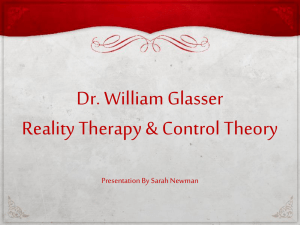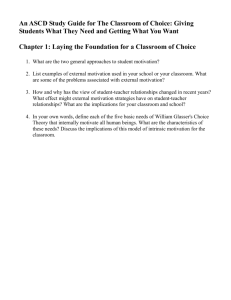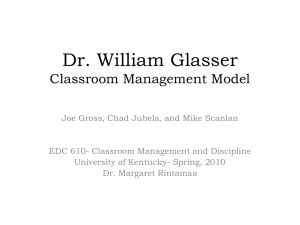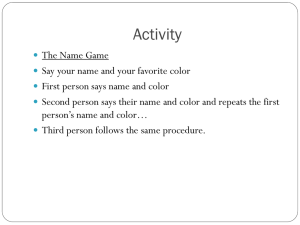File
advertisement
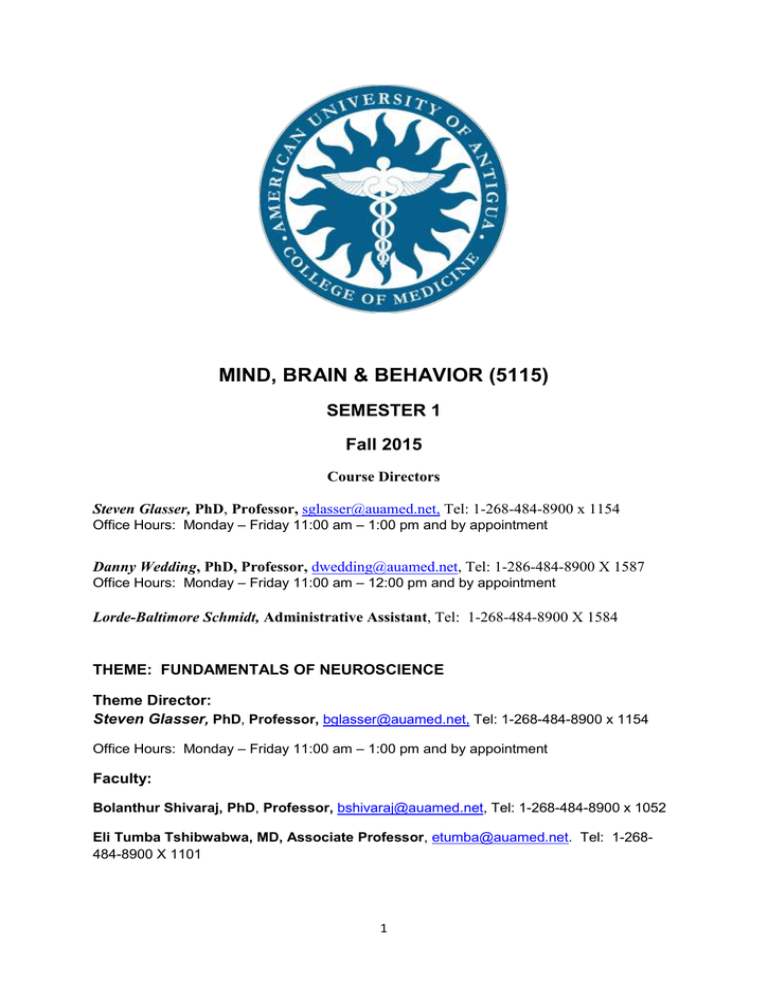
MIND, BRAIN & BEHAVIOR (5115) SEMESTER 1 Fall 2015 Course Directors Steven Glasser, PhD, Professor, sglasser@auamed.net, Tel: 1-268-484-8900 x 1154 Office Hours: Monday – Friday 11:00 am – 1:00 pm and by appointment Danny Wedding, PhD, Professor, dwedding@auamed.net, Tel: 1-286-484-8900 X 1587 Office Hours: Monday – Friday 11:00 am – 12:00 pm and by appointment Lorde-Baltimore Schmidt, Administrative Assistant, Tel: 1-268-484-8900 X 1584 THEME: FUNDAMENTALS OF NEUROSCIENCE Theme Director: Steven Glasser, PhD, Professor, bglasser@auamed.net, Tel: 1-268-484-8900 x 1154 Office Hours: Monday – Friday 11:00 am – 1:00 pm and by appointment Faculty: Bolanthur Shivaraj, PhD, Professor, bshivaraj@auamed.net, Tel: 1-268-484-8900 x 1052 Eli Tumba Tshibwabwa, MD, Associate Professor, etumba@auamed.net. Tel: 1-268484-8900 X 1101 1 THEME: NEUROLOGY Theme Director: Madeline Fraser, MD, Associate Professor, mfraser@auamed.net, Tel: 1-268-484-8900 x 1085 THEME: MEDICAL STUDENT & PHYSICIAN WELL-BEING, DOCTOR-PATIENT RELATIONSHIPS, & MEDICAL ETHICS Theme Director: Danny Wedding, PhD, Professor, dwedding@auamed.net, Tel: 1-286-484-8900 X 1587 Office Hours: 11:00 am – 12:00 pm and by appointment Faculty: Professor Lynn McKnight, lmcknight@auamed.net, Tel: 1-286-484-8900, Ext. 1586 2 TABLE OF CONTENTS TOPICS PAGE BRIEF COURSE DESCRIPTION 4 EVALUATION 4 REQUIRED TEXTBOOKS 5 COURSE GOALS AND OBJECTIVES 6 COURSE CALENDAR 10 3 BRIEF COURSE DESCRIPTION This four-semester multidisciplinary course is codirected by a developmental neurophysiologist and a clinical psychologist who will be assisted by senior faculty from almost every department in the School of Medicine (“Theme Directors”). The course is designed to integrate what we know about the human brain and its relationship to human behavior, especially in the context of medicine, disease and psychopathology. The first semester consists primarily of presentations and discussions of brain structures and systems (including development, microscopic and gross anatomy of each component), their functionality, pathophysiology, and their relevant clinical correlations. We also will introduce you to clinical neuroimaging. In addition, the initial lectures in the first semester will overview the explosion of knowledge that has occurred in the neurosciences during the past two decades, discuss the philosophical dilemma of mind and body, emphasize the primacy and importance of the doctor-patient relationship, describe the types of ethical dilemmas confronted by physicians, and illustrate the critical importance of self-care for medical students, physicians and other health professionals. Whenever possible, medical humanities will be used to illustrate the clinical and scientific issues being discussed. The course is designed to progress sequentially and logically across four semesters from the study of neurons to examination of the societal issues confronting medicine in the 21st century. EVALUATION All exams this semester will be given in a “Block Exam” format. Mind, Brain & Behavior questions will be categorized and you will receive a letter grade based on your performance on those questions. As with all AUA courses, you will be graded based on a Fail/Pass/High Pass/Honors grading system: <70% Fail (F) 70-79% Pass (P) 80-89% High Pass (HP) >90% Honors (H) 4 REQUIRED TEXT BOOKS Theme: MEDICAL STUDENT & PHYSICIAN WELL-BEING, DOCTOR-PATIENT RELATIONSHIPS, & MEDICAL ETHICS Required Text Books: Black, D. W. & Andresean, N. C. (2014). Introductory Textbook of Psychiatry (6th Ed). Washington, DC: American Psychiatric Association. Wedding, D., & Stuber, M. L. (2010). Behavior and Medicine (5th Ed.). Cambridge, MD: Hogrefe. Reference: Additional readings (available to all students on Blackboard) will be used to supplement these lectures. Theme: FUNDAMENTALS OF NEUROSCIENCE Required Text Books: Nolte, J. (2008). The Human Brain: An Introduction to Its Functional Anatomy. Latest edition. Guyton A.C., & Hall J.E. (2010). Textbook of Medical Physiology (12th Ed.) W. B. Sunders. Haines, D.E. (2011). Neuroanatomy: An Atlas of Structures, Sections and Systems (8th Ed.). Philadelphia, PA: Lippincott Williams & Wilkins. Baynes, J. W. & Dominiczak, M.H. (2014). Medical Biochemistry (4th Ed.) Saunders Elsevier, Chapter 41.1, Pages 551 – 563. (This book is available in our library; it is also one of the recommended reference text books for Biochemistry) Reference: Additional readings (available to all students on Blackboard) will be used to supplement these lectures. 5 COURSE GOALS AND OBJECTIVES Goal 1: Appreciate the majesty and complexity of the human brain, recent advances in neuroscience, and the challenges of understanding the linkage between brain and behavior. LECTURE 1 Objectives: Understand that the brain is a complex, multidimensional organ Appreciate that there have been tremendous advances in neuroscience in the past two decades Acknowledge the fact that despite these advances, there is still much that is unknown about the human brain Develop a sense of awe regarding the human brain Goal 2: Understand the mechanisms for particle movement through semipermeable membrane and the mechanisms responsible for the establishment of a resting membrane potential. LECTURE 2 Objectives: Explain the difference between bulk flow and diffusion Distinguish between the 3 processes not requiring energy with that requiring ATP Define osmosis Explain the concept of equilibrium both for changed and unchanged particles Define permeability and the mechanism that determines an ion’s permeability Differentiate between Nernst and Goldman Equations Differentiate between an equilibrium potential and a steady- state potential Goal 3: Understand the mechanism underlying the development of an action potential. LECTURE 3 Objectives: Differentiate between sodium, potassium and chloride gradients and the driving forces involved in the movement of these ions Explain the difference between chemical and electrical gradients Explain the difference between leak channels and voltage gated channels 6 Explain the roles of sodium, potassium and the sodium/potassium pump in the generation of the action potential Differentiate between the absolute and relative refractory periods and their role in action potential propagation Explain the mechanism for propagation of the action potential Define salutatory conduction Define the role of myelin in conduction Differentiate between CNS & PNS demyelination and its consequences Goal 4: Understand the biochemistry of the brain. LECTURE 4 Objectives: Define neurotransmitters Classify neurotransmitters with well-known examples Explain the biochemical nature of different neurotransmitters Outline the pathways for the biosynthesis and degradation of common neurotransmitters Explain the neurotransmitter receptors and their general mode of action Explain certain clinical consequences arising due to derangement in the metabolism of neurotransmitters Goal 5: Understand the mechanisms involved in synaptic neurotransmission. LECTURE 5 Objectives: Differentiate between presynaptic and postsynaptic function Define neurotransmitters and their classification Explain the roles of depolarization and calcium permeability in neurotransmitter release Define the role of agonists and antagonists in synaptic function Differentiate between voltage and ligand dependent responses LECTURE 6 Objectives: Explain the mechanisms in the generation of excitatory and inhibitory postsynaptic responses Differentiate between temporal and spatial summation Explain the consequences of decemental vs nondecremental conduction Explain the role of the axon hillock and initial segment in the generation of a post synaptic response Differentiate between ionotropic and metabotopic synaptic function Explain the mechanisms and consequences of axo-axonic synaptic interactions 7 Goal 6: Understand the mechanism of skeletal muscle, cardiac muscle and smooth muscle excitation and contraction. LECTURE 7 Objectives: Explain the specificities found at the neuromuscular junction Differentiate between an end-plate potential and a skeletal muscle action potential Identify the sarcoplasmic reticulum and explain its role in muscle contraction Explain the roles of calcium, thin filaments, and thick filaments in muscle contraction LECTURE 8 Objectives: Compare and contrast skeleton muscle and cardiac muscle action potentials and their resultant contractions Explain the mechanism for generating prepotentials in cardiac muscle Diagram the conduction system in cardiac muscle and explain how it functions Discuss the mechanisms involved in smooth muscle contraction, and explain how it differs from striated muscle contraction Goal 7: Understand nerve muscle dysfunction related to clinical disease. LECTURE 9 Objectives: Explain how muscle weakness can result from dysfunction from many different sites in the motor system Give examples of weakness resulting from dysfunction at a specific sites Identify and give examples of the mechanisms involved in motor dysfunction at specific sites Identify specific motor disorders in patients as shown in brief video clips Goal 8: Understand the organization and function of the autonomic nervous system LECTURE 10 Objectives: Differentiate the functional organization of the somatic motor and autonomic motor systems Describe the functional organization of the parasympathetic motor system Describe the functional organization of the sympathetic motor system 8 LECTURE 11 Objectives: List neurotransmitters, agonists and antagonists involved in somatic motor function List neurotransmitters, agonists and antagonists involved in parasympathetic function List neurotransmitters, agonists and antagonists involved in sympathetic function Explain how parasympathetic and sympathetic neurotransmissions modify the function of the organs associated with the autonomic nervous system Goal 9: Understand the major methods and methodologies used to view the human brain. LECTURE 12 Objectives: Identify the major methods used to visualize and evaluate the human brain Describe which modality should be used in different clinical situations Describe the advantages and disadvantages of each neuroimaging methodology Goal 10: Understand the functional divisions of the central nervous system. LECTURE 13 Objectives: Understand the basic functional anatomy of the central nervous system Differentiate between the central nervous system and the peripheral nervous system and their derivations. Differentiate between primary brain vesicles and secondary brain vesicles List the secondary brain vesicles, their principle derivatives and functions Explain the functional development of telencephalic and diencephalic structures LECTURE 14 Objectives: Draw the components of the brain stem Identify the components of the mesencephalon and describe their function Describe the functional organization of the pons Describe the functional organization of the medulla Describe the functions of the cerebellum 9 List the cranial nerves associated with each region of the brain LECTURE 15 Objectives: Draw a cross section of the spinal cord and include all the major components Discuss the functional organization of the grey matter of the spinal cord Discuss the functional organization of spinal white matter Draw the cortical spinal tract from its origin in the cerebral cortex through the brain stem, ending on spinal lower neurons Goal 11: Understand the Organization of the Neuroaxis Based on Clinical Correlations LECTURE 16 Objectives: Describe clinical dysfunction in patients with lesions at various levels of the neuroaxis Identify the major disorders associated with damage to the neuroaxis that are likely to be encountered in clinical practice Explain how a physician would evaluate a patient presenting with neurologic signs and symptoms Goal 12: Understand the ways in which some brains are exceptional, and be able to give examples of geniuses, child prodigies, savants, and people with extraordinary memories. LECTURE 17 Objectives: Describe the ways in which people differ intellectually List the components of Howard Gardner’s concept of multiple intelligences Give examples of individuals with exceptional memory skills Describe some of the exceptional abilities exhibited by people who have autism spectrum disorder Goal 13: Understand the stress and pressures associated with the practice of medicine, and be aware of effective methods for coping with these pressures LECTURE 18 Objectives: 10 Describe the relationship between physician stress and substance abuse Explain what is known about physician suicide vis-à-vis other populations and across medical specialties Describe the relationship that exists between physical and mental health Describe the relationship between the practice of medicine and divorce Identify creative and effective ways of coping with the stress of medical school and medical practice Goal 14: Discuss the Ethical Standards of the American Medical Association and the American Psychiatric Association, including the guiding principles and decision-making guidelines physicians use when confronted with ethical dilemmas. LECTURE 19 Objectives: Identify the principle Ethical Standards of the American Medical Association and the American Psychiatric Association. Differentiate the major ethical principles in medicine (e.g., nonmaleficence, fidelity, autonomy, beneficence). Explain the limits of confidentiality including duty-to-warn issues Analyze several ethical dilemmas describing relevant ethical principles and decision making strategies in small groups conducted by Introduction to Clinical Medicine faculty. Important Notes: 1. The students are advised to develop the habit of attending the classes regularly (Please refer to the consolidated Calendar/Schedule of activities), as the overall attendance of a student should not fall below 80% as per AUA rules. 2. Reading materials for different topics will be uploaded into Blackboard by the faculty when required. 3. Students are advised to go through the required text books/reading materials/other reference text books (if necessary) for each topic in advance (based on the learning objectives) before attending the lecture classes. 11 COURSE CALENDAR BLOCK 1 DATE TOPICS TIME WEEK 1, Aug 17 - 21 TUE 18 1. Overview: What is the Brain? What is the Mind? Does it Matter? WEDDING/GLASSER 3 – 4 pm THU 20 2. Resting Membrane & Action Potentials I GLASSER 3 – 4 pm WEEK 2, Aug 24 - 28 TUE THU 25 27 3. Resting Membrane & Action Potentials II GLASSER 4. Biochemistry of Neurotransmitters SHIVARAJ 3 - 4 pm 3 – 4 pm WEEK 3, Aug 31 – Sep 4 TUE 1 5. Synapses I GLASSER 3 – 4 pm WED 2 6. Synapses II GLASSER 3 – 4 pm THU 3 7. Nerves & Muscles I GLASSER 2 – 3 pm THU 3 8. Nerves & Muscles II GLASSER 3 – 4 pm FRI 4 9. Nerve Muscle Functions with Clinical Applications FRASER 3 – 4 pm WEEK 4, Sep 7 - 11 MON 7 10. Functions of Autonomic Nervous System I GLASSER 2 – 3 pm MON 7 11. Functions of Autonomic Nervous System II GLASSER 3 – 4 pm THU 9 MBB Block 1 Exam Review GLASSER 2 – 3 pm WEEK 5, Sep 14 – 18 BLOCK 1 EXAM (Thursday, September 17) BLOCK 2 (3 HOURS) WEEK 6, Sep 21 - 25 FRI 25 MBB Post Block 1 Exam Review GLASSER 3 – 4 pm WEEK 7, Sep 28 – Oct 2 (No MBB classes) WEEK 8, Oct 5 - 9 FRI 9 12. Neuroimaging of the Brain TSHIBWABWA 3 – 4 pm WEEK 9, Oct 12 – 16 FRI 16 13. Functional Overview I: Cerebral Cortex GLASSER 3 – 4 pm WEEK 10, Oct 19 – 23 MON 19 14. Functional Overview II: Brain Stem GLASSER 2 – 3 pm MON 19 15. Functional Overview III: Spinal Cord GLASSER 4 – 5 pm TUE 20 16. Functional Overview IV: Organization of the Neuroaxis with Clinical Correlation GLASSER/FRASER 4 – 5 pm WEEK 11, Oct 26 - 30 BLOCK 2 EXAM (Thursday, October 29) BLOCK 3 WEEK 12, Nov 2 - 6 THU 5 Block 2 Post Exam Review 3 – 4 pm WEEK 13, Nov 9 – 13 (No MBB classes) 12 WEEK 14, Nov 16 – 20 (No MBB classes) WEEK 15, Nov 23 – 27 MON 23 17. Exceptional Brains WEDDING 3 – 4 pm WED 25 18. Medical Student and Physician Well Being WEDDING 4 - 5 pm THU 26 19. Medical Ethics McKNIGHT 3 – 4 pm WEEK 16, Nov 30 – Dec 4 WED 2 2 – 3 pm MBB Block 3 Exam Review WEEK 17, Dec 7 – 11 (No MBB classes) WEEK 18, Dec 14 – 18 (No MBB classes) BLOCK 3 EXAM (Tuesday, December 15) 13
